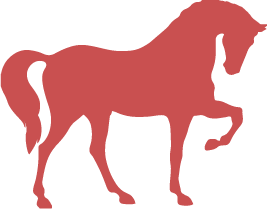THE ORIGINAL, RESEARCH-PROVEN STABILISED RICE BRAN CONDITIONING SUPPLEMENT
Stabilised rice bran, which is the main ingredient in Equi-Jewel, has become a popular dietary additive for many different types of horses. In…
Free Delivery when you spend $49 or more. (Weight Limits Apply – view more)
 Dog
Dog

Shop Tuckers great range of dog food, health care & wellness products today. Delivered or Click & Collect.
 Cat
Cat

Tuckers has a great range of cat food, health care & litter products for your beloved cat. Shop now.
 Horse
Horse

Tuckers carry a huge range of food, supplements, health care, hoof care and grooming accessories. Shop now.
 Chook/Bird
Chook/Bird

Tuckers range of food, accessories & health care products will keep your chooks & birds happy and healthy.
 Small Animal
Small Animal

Shop food and health care products for your little mates @ Tuckers. Delivered or Click & Collect.
 Farm/Garden
Farm/Garden

Tuckers carry a wide range of sheep & cattle products, plus everything you’ll need around the farm or garden.
 Dog
Dog

Shop Tuckers great range of dog food, health care & wellness products today. Delivered or Click & Collect.
 Cat
Cat

Tuckers has a great range of cat food, health care & litter products for your beloved cat. Shop now.
 Horse
Horse

Tuckers carry a huge range of food, supplements, health care, hoof care and grooming accessories. Shop now.
 Chook/Bird
Chook/Bird

Tuckers range of food, accessories & health care products will keep your chooks & birds happy and healthy.
 Small Animal
Small Animal

Shop food and health care products for your little mates @ Tuckers. Delivered or Click & Collect.
 Farm/Garden
Farm/Garden

Tuckers carry a wide range of sheep & cattle products, plus everything you’ll need around the farm or garden.

Narrowing down the specific reason why horses persistently itch can be time-consuming and frustrating for their caretakers. Ectoparasites, or external parasites, are a possible cause. Review these five ectoparasites, some of which may be known to you and some of which may not be.
Culicoides and other biting insects. These tiny flying insects, sometimes called no-see-ums or flying midges, wreak havoc on horses. While Culicoides often feed from multiple areas of the horse, they habitually swarm around the belly. These insects cause a hypersensitivity response due to a salivary allergen, and the resulting condition is called Culicoides hypersensitivity, sweet itch, or Queensland itch. A hereditary predisposition to the hypersensitivity is thought to be at play in some instances. Without question, the trademark sign of this hypersensitivity is pruritus, or itchiness. Limiting the occurrence of the hypersensitivity seems to depend on management strategies designed to keep insects away from horses, such as stabling during peak feeding hours, sunrise and sunset; use of ultra-fine mesh or screens over windows; fly control with permethrin; overhead fans; and avoidance of standing water.
In addition to Culicoides, the roster of biting flies that prove bothersome to horses is long: stable, horn, horse, deer, and black flies. All of these can cause pruritic dermatitis in horses through biting. Lesions caused by biting flies are usually treated symptomatically, with therapy consisting of gentle cleansing to remove crusts and application of topical medications, including corticosteroids, at the top of the list. Unlike biting flies, mosquito bites cause swelling but do not exude blood.
Removing habitat that keeps biting insects in the vicinity may help reduce the population, so maintain stalls impeccably and dispose of rotting vegetation and manure far from the barn or anywhere horses congregate. If horn flies are a particular problem, horses may have to be separated from cattle in the area, as these insects require cow manure as part of their life cycle.
Chorioptes mites. These mites are found on the often-hairy lower limbs of draft or draft-type horses, with pruritus as the primary sign and crusts and bald patches, known as alopecia, as ancillary signs. Multiple skin scrapings will likely be necessary to identify the mites because they are often difficult to detect on microscopic examination. Even if skin scrapings reveal no definitive infestation, many veterinarians will treat horses for mites based on the clinical signs. In addition to treating all horses in a herd, the environment, such as stabling, grooming areas, and transport trailers, should be thoroughly cleaned as well, as mites can survive off of hosts.
Lice. In some areas of the world, biting and sucking lice remain a problem, especially in unthrifty horses that are not groomed regularly. Lice seem to be more problematic in the winter, especially when horses are kept confined in close quarters. Biting and sucking lice tend to infest different parts of the horse, with biting lice favoring the topline and the sides of the barrel and sucking lice preferring the mane, tail, and fetlocks. Biting lice tend to be migratory, while sucking lice are inclined to be less mobile.
Chiggers. Less vexing and widespread than biting insects and mites, chiggers can affect horses in North America and Europe. Chiggers are the six-legged larval stage of a plant parasite; interestingly, chiggers require a blood meal to complete their life cycle. Larvae attach to the horse, ingest blood, and then release themselves two to three days after arrival. The lesions caused by chiggers, which usually result in 1-2 mm crusts, have been identified on the head, neck, chest, and limbs. The degree of pruritus depends on the severity of the infestation. An infection with chiggers is termed thrombiculidiasis.
Pinworms. Oxyuriasis is the scientific term for an infestation of pinworms, also known as Oxyuris equi. Adult pinworms reside in the cecum and colon of the horse and feed on fecal matter. Once fertilized, female parasites journey to the rectum and through the anal sphincter to lay eggs in the perineal region. Eggs are bound by an irritating gelatinous matter that incites intense pruritus.
Infested animals rub the top of their tail incessantly to stem the itchiness, almost always to the point where tail hair is ruffled and broken and sometimes so badly that baldness and bleeding occur. Pinworms should be considered a possible diagnosis if the horse is rubbing just its tail; a horse rubbing both its mane and tail is likely to have a different parasitological problem, such as Culicoides infection.
Horses that persistently itch should be examined by a veterinarian, as many of these parasite problems do not resolve without treatment. Some horses become stressed to the point of inappetence if infestation and pruritus are severe enough. If flying insects are especially abundant, horses, especially sensitive ones, will run to keep insects from hovering and biting. This can have detrimental effects on body condition, hoof health, and soundness.
All horses should have access to a well-formulated diet, appropriate housing or shelter, and regular grooming. Two dietary supplements known to benefit skin and coat condition are Bio-Bloom PS (Bio-Bloom HF in Australia) and EO-3. Bio-Bloom PS contains biotin and several other nutrients known for their positive effects on integumentary tissues, such as hooves, skin, and hair. EO-3 is a fish oil rich in the omega-3 fatty acids DHA and EPA that helps reduce body-wide inflammation. Many horse owners extol the virtues of fish oil in relieving skin problems in horses, including those caused by ectoparasites.
White, S.D. 2019. Working up the pruritic horse. In: Proc. 41st Bain Fallon Lectures. Equine Veterinarians Australia, pp. 32-40
Entire range - quick and secure delivery
Buy securely online and pickup at your local store
Call your local store and come on down to pickup
© 2024 Tuckers Pet & Produce.
